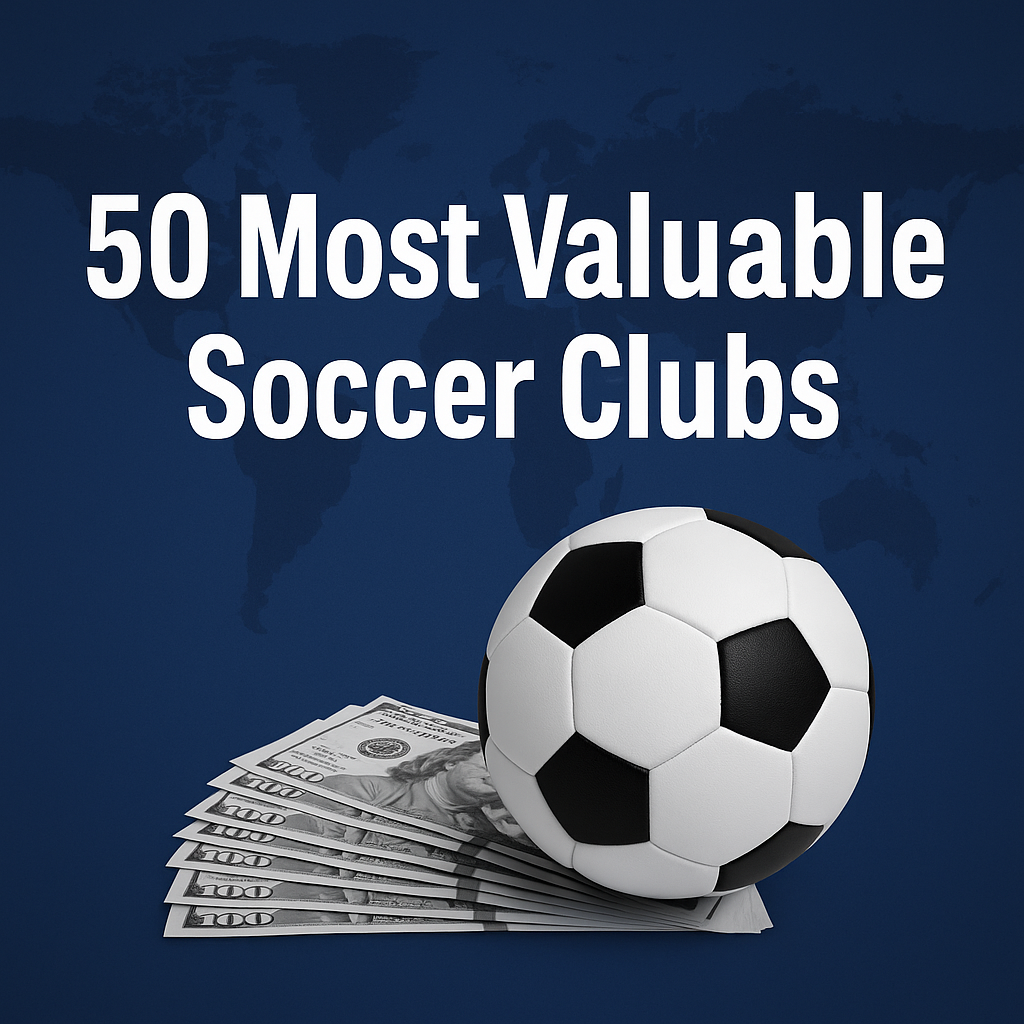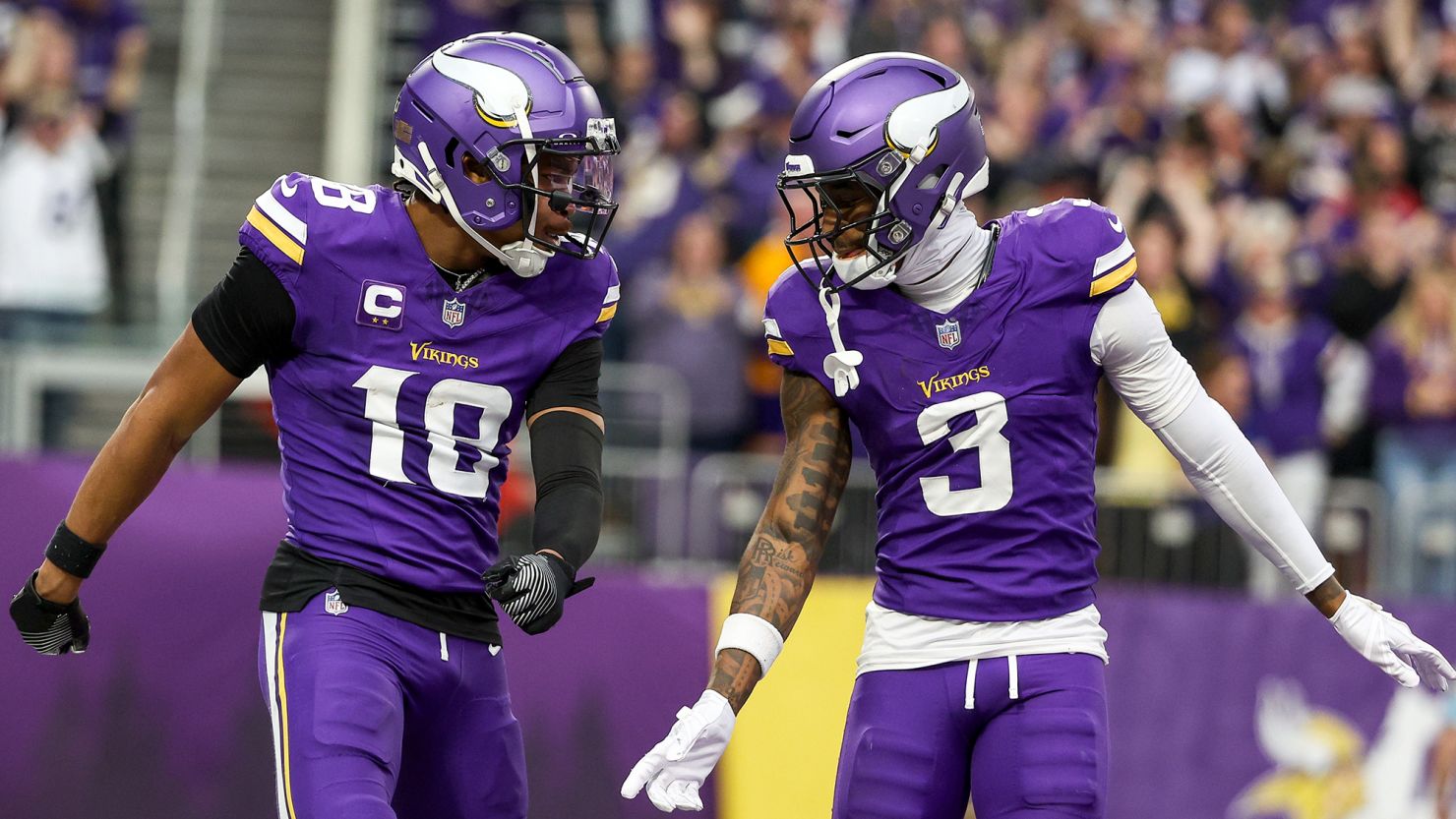Based on Sportico’s 2025 Top 50 Most Valuable Soccer Clubs list, with original analysis by 365247.
The Billion-Dollar Powerhouses of World Football
In a world where global fan bases, digital monetization, and massive broadcasting rights dictate financial success, the 2025 list of the world’s most valuable football clubs reveals a shifting dynamic in global football power. Sportico’s meticulous valuation methodology—drawing on financial reports, Deloitte’s Money League, insights from analysts like Kieron O’Connor, and internal estimates—gives us a reliable lens through which to view this ecosystem.
The Top Five: Madrid Leads, Manchester Chases
Real Madrid tops the list in 2025 with a staggering valuation of $6.53 billion, reclaiming the #1 spot from Manchester United ($6.09 billion). Madrid’s meteoric rise is driven by unmatched commercial growth, their Champions League victory, and the reinvention of the Santiago Bernabéu Stadium into a year-round entertainment venue. With $346 million in matchday revenue alone—twice that of their nearest rival—they have redefined what stadium monetization means.
Manchester United remains a financial titan despite on-field turbulence. Its $6.09 billion valuation reflects the enduring pull of the club’s global brand and its lucrative deals, such as the Adidas kit deal worth over $100 million annually.
The rest of the top five includes:
- FC Barcelona ($5.71B)
- Liverpool ($5.59B)
- Bayern Munich ($5.21B)
These clubs continue to attract significant commercial revenue thanks to deep international fanbases and elite performance in domestic and continental competitions.
Premier League Dominance
English Premier League clubs dominate the top 50, showcasing the financial strength of the world’s most-watched domestic league. Broadcast deals—both domestic and international—continue to drive up valuations. Manchester City, Arsenal, Chelsea, and Tottenham all feature in the top 20.
Manchester City, in particular, leads all clubs in broadcast revenue with $371 million, thanks to another Premier League title and a Champions League quarterfinal run. The club’s consistent domestic success and global branding under City Football Group have created a blueprint for scalable football operations.
Additionally, clubs like Arsenal and Aston Villa are experiencing valuation boosts driven by competitive resurgence, improved stadium strategies, and growing global fan engagement via digital platforms. Aston Villa’s growth, in particular, is attributed to their strong American ownership influence, recent European qualification, and successful commercial partnerships.
The Rise of Major League Soccer (MLS)
One of the most notable stories in Sportico’s rankings is the strong showing by Major League Soccer (MLS) teams. With 19 teams featured in the top 50, the league has firmly established itself as a global player in football business.
Top MLS Clubs in 2025:
- Los Angeles FC – $1.28 billion (#16 globally)
- Inter Miami CF – $1.19 billion
- LA Galaxy – $1.11 billion
- Atlanta United – $1.08 billion
- New York City FC – $1.00 billion
What’s driving this explosive valuation growth?
Factors Behind MLS’s Surge:
1. No Relegation = Investor Security
MLS’s closed-league model with no promotion or relegation appeals to institutional investors looking for long-term security. Clubs operate in a low-risk environment, unlike European leagues where relegation can halve a team’s value overnight.
2. Media Rights and Streaming Growth
Apple’s $2.5 billion global streaming deal with MLS and other local/national broadcast partnerships have driven steady media income. As younger fans shift towards streaming-first experiences, MLS has become a future-proof investment.
3. Strategic Market Penetration
Clubs like Inter Miami have become cultural phenomena, especially after the arrival of Lionel Messi. Miami’s value has nearly doubled, driven by explosive merchandise sales, ticket demand, and global visibility.
4. Commercial and Real Estate Synergies
MLS clubs are increasingly merging football with lifestyle and real estate. LAFC’s mixed-use development model and Nashville SC’s plans for entertainment complexes show how clubs are expanding beyond matchday into full-scale experiential branding.
5. Celebrity Ownership and Lifestyle Branding
Ownership by celebrities like David Beckham (Inter Miami), Will Ferrell (LAFC), and Patrick Mahomes (Sporting KC) has helped MLS clubs build crossover appeal, attract sponsors, and reach non-traditional football audiences. These celebrity associations turn clubs into content platforms as much as sports teams.
6. Latin American Talent Pipeline
Many MLS clubs have become gateways for young South American talent, offering competitive wages and a springboard to Europe. This has added both sporting value and international commercial appeal.
How Are Clubs Valued?
Sportico’s methodology incorporates a mix of financial analysis and qualitative factors. Here’s how they break it down:
- Revenue Streams: Includes broadcast (media rights + prize money), commercial (sponsorships, merchandise, corporate events), and matchday (tickets, memberships).
- Multipliers: A team-specific revenue multiplier (ranging from 2.5x to 7.25x) is applied based on variables such as market size, brand strength, recent performance, and stadium ownership.
- Three-Year Averages: To mitigate volatility, average revenue over the past three seasons is used.
- Exchange Rates: Valuations are converted to USD using exchange rates as of May 3, 2025 (€1 = $1.13, £1 = $1.33).
Notably, most European clubs operate at a loss, but the sport’s trajectory and long-term media rights growth are the real draws for investors.
Strategic Implications for Global Football
The gap between elite and mid-tier clubs is widening, especially in Europe. The threat of relegation and dependence on Champions League revenue create financial fragility. Meanwhile, U.S.-based MLS teams are reaping the benefits of franchise-style stability.
As private equity continues to flow into the game, clubs that can combine on-field performance with business innovation (stadium redevelopment, global branding, digital content) will be the true winners.
We are entering a new era where the financial architecture of clubs may matter as much as the sporting side. Expect hybrid entertainment-business models, player-media crossovers, and real estate-led club strategies to define the next decade of growth.
What’s Next?
Expect further American and Middle Eastern investment in European clubs as global investors seek undervalued assets with growth potential. The MLS may also see new clubs break into the top 50 as expansion continues and commercial strategies evolve.
Meanwhile, Real Madrid’s transformation into a multi-purpose sports and entertainment business could serve as the benchmark for clubs worldwide.
Additionally, emerging football markets—such as Saudi Arabia, India, and Southeast Asia—could see their domestic clubs enter the rankings in future editions as local leagues attract more foreign stars, institutional capital, and broadcast deals.


